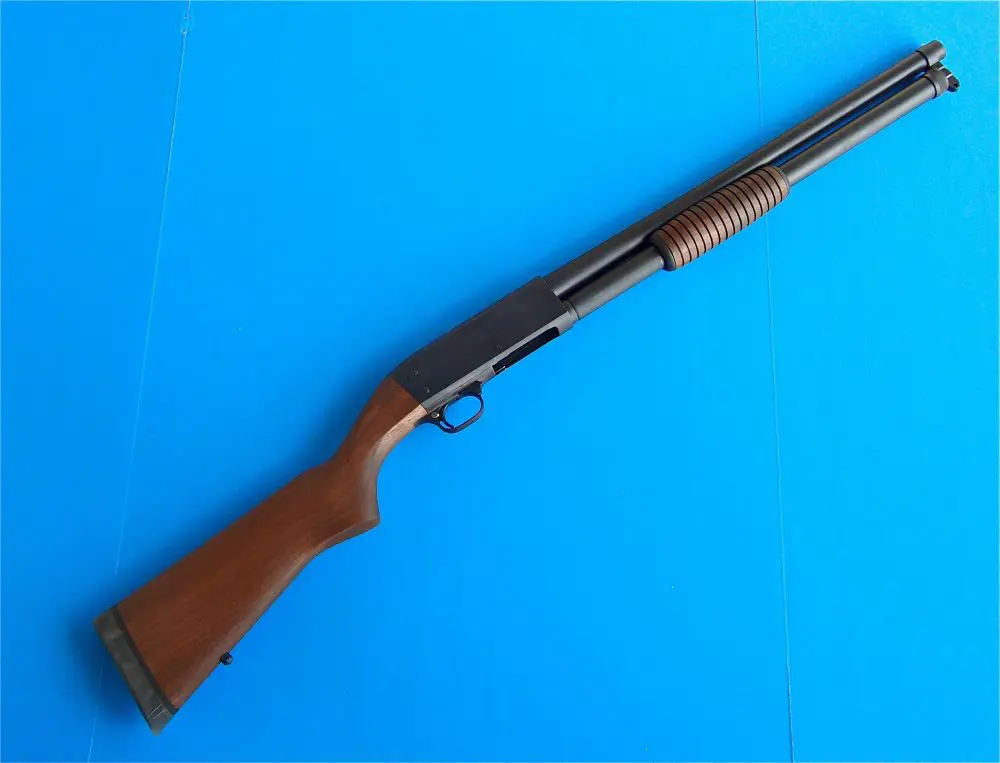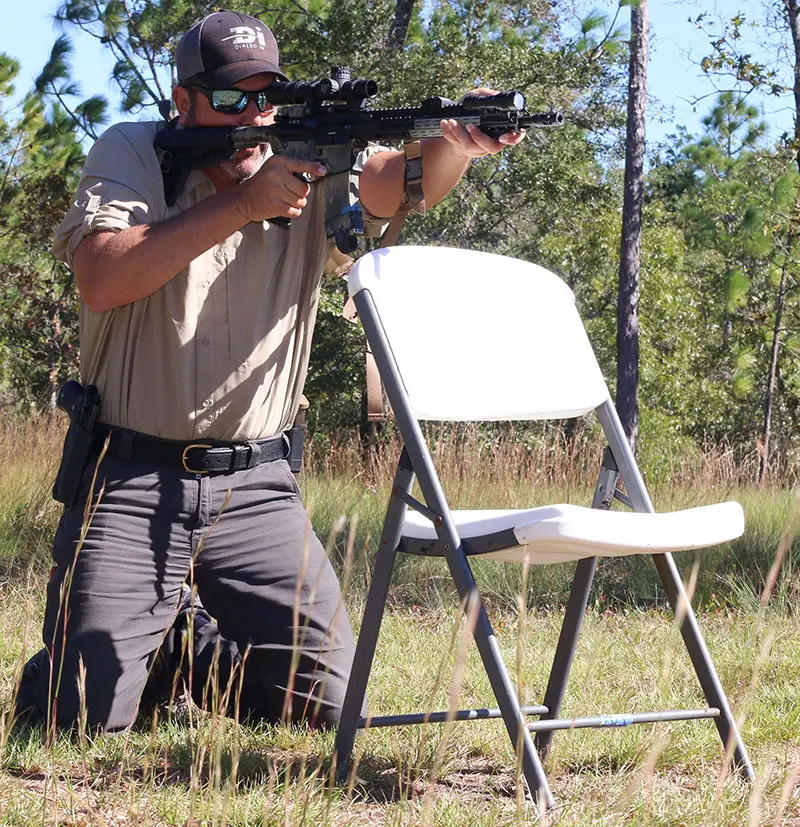
The Remington 870 has been so dominant among U.S. combat shotguns for decades that it is easy to forget that the Ithaca 37 has seen a lot of street and jungle use as well.
Among the many satisfied users of the Model 37 were the LAPD, LA County Sheriff’s Department, U.S. Army Special Forces, and U.S. Navy SEALs. An LAPD contact of mine told me that as of the late 1990s or early 2000s, there were still some Model 37s in department armories.
The Model 37 design actually owes its origins to two of the USA’s most famous firearms innovators—John Browning and John Pederson. This original design was marketed by Remington as the Model 17, then redesigned and improved as the Model 31. Eventually, the design would evolve into the ubiquitous 870. Ithaca waited for the original Browning and Pederson patents to expire, then introduced their own pump-action shotgun based on them in 1937 as the Model 37. Initially, sales were relatively slow due to the Depression.
When World War II began, Ithaca made Model 37 Trench Guns for the U.S. armed forces along with M3 Grease Guns and M1911A1 pistols.
The figure I have seen cited for the number of Model 37 trench guns delivered to the government in WWII is 1,422. Some riot guns were also delivered. Because so few trench guns were delivered, they are highly sought by U.S. military shotgun collectors.
Model 37 riot and trench shotguns are more often associated with use during the Vietnam War. During late 1962 and early 1963, about 22,000 Model 37 riot guns were produced for the ARVN (Army of the Republic of Vietnam). U.S. advisors grabbed on to at least a few of those. Reportedly, more than 20,000 Model 37 riot guns were also procured for U.S. troops. They were very popular with the SEALs, and a few included the duck’s foot spreader choke.
Ithaca Model 37 Defense, eight-shot model, is a no-frills, reliable, and well-designed combat shotgun.
The Air Force and Navy acquired a relatively small number of Model 37 trench guns during the Vietnam era as well. At least some of the riot guns ended up with police departments in the post-Vietnam era. I saw a couple of them in the armory of a local municipality in the St. Louis area 20 years ago.
An interesting Ithaca Trench Gun was marketed commercially for sale to law enforcement agencies. It was basically the same gun as the Vietnam-era military contract guns but without “US” markings. They seem to bring fairly high prices when I see one for sale, and I’m sure some have passed through the hands of unscrupulous individuals and ended up with fake “US” markings and higher price tags.
Two characteristics of the Model 37 made it especially appealing to law enforcement and military users. Like the Winchester Model 97 and Model 12 trench and riot guns, the Model 37 did not have a disconnector, so the shotgun to be fired repeatedly by holding the trigger back and just operating the pump action.
Some users also liked the Model 37’s bottom ejection port, which allowed the shotgun to be fired around right or left cover and right or left handed without side-ejected empties bouncing into walls or faces. In my experience, the bottom ejection was not a problem when shooting prone or using low cover either.
I was thinking about the Model 37 riot and pump guns when I was starting a book on U.S. military shotguns. For some years I’d used a Model 37 police model with full-length magazine. I’m pretty sure it was a former Illinois prison gun—I had purchased it across the Mississippi at an Illinois gun show. Silly me, though, I sold it a few years ago. At the time, I didn’t realize that later Model 37 combat shotguns do not have the “slam fire” feature. They now have a disconnect that limits firing to one shot per pump and trigger pull. To be honest, I never considered the feature a particular tactical advantage, but now that I can’t have it, I want it!
Ithaca 37 Defense’s bottom ejection allows good use of cover from either shoulder.
Still, I thought it would be a good time to test the latest incarnation of the Model 37 fighting shotgun—the Model 37 Defense. This current model is offered in four configurations: five-shot wood stock and five-shot synthetic stock, and eight-shot wood stock and eight-shot synthetic stock. I went with the eight-shot wood, which was similar to the last Model 37 I owned. The first thing I did when it came in was try pumping and holding the trigger back—yep, it now has a disconnect.
The matte blue finish, walnut buttstock and forend, and brass bead front sight are traditional and businesslike. The forend has the ringed gripping surface I remember from other 37 combat shotguns I’ve owned. The controls are very ergonomic: the slide release lever is easy to operate with the trigger finger, as is the cross-bolt safety behind the trigger guard. Mounting points for a sling at the front of the tubular magazine and on the stock offer a useful option for a police or military shotgun.
I decided to test the Model 37 Defense with an array of ammo but especially Remington three-inch Magnum #1 buckshot, since I consider this one of the better combat shotgun loads.
I fired patterns at 10, 25, and 50 yards. As can be expected with a cylinder-bore shotgun, patterns were good, but not as tight as those from choked scatterguns. At 10 yards, all 20 pellets impacted in the central area of the target. When I moved back to 25 yards, 11 pellets impacted on the target. At 50 yards, three pellets hit the target.
I also fired some Federal Tactical 00 buck rounds and Winchester Low Recoil #4 buckshot at 15 yards and found the patterns were still good, but not outstanding.
Various factors helped make shooting the Model 37 rather pleasant. First, the relatively thick rubber recoil pad cushioned recoil even of the three-inch Magnum loads. Trigger pull, which Ithaca advertises as between four and six pounds, was quite good and allowed fast follow-up shots to be delivered accurately.
As already mentioned, the ergonomics are quite good. I also tried shooting around right- and left-hand cover and low cover. The downward ejection proved useful from behind cover and not a disadvantage when using low cover.
I found the Ithaca Model 37 Defense a very usable combat shotgun. The slide action works smoothly—making a full sure throw was not difficult. I would have no problem using it as a home defense, patrol car or personal vehicle shotgun.
SOURCE:
Ithaca Gun Company
(877) 648-4222
www.ithaca.com







